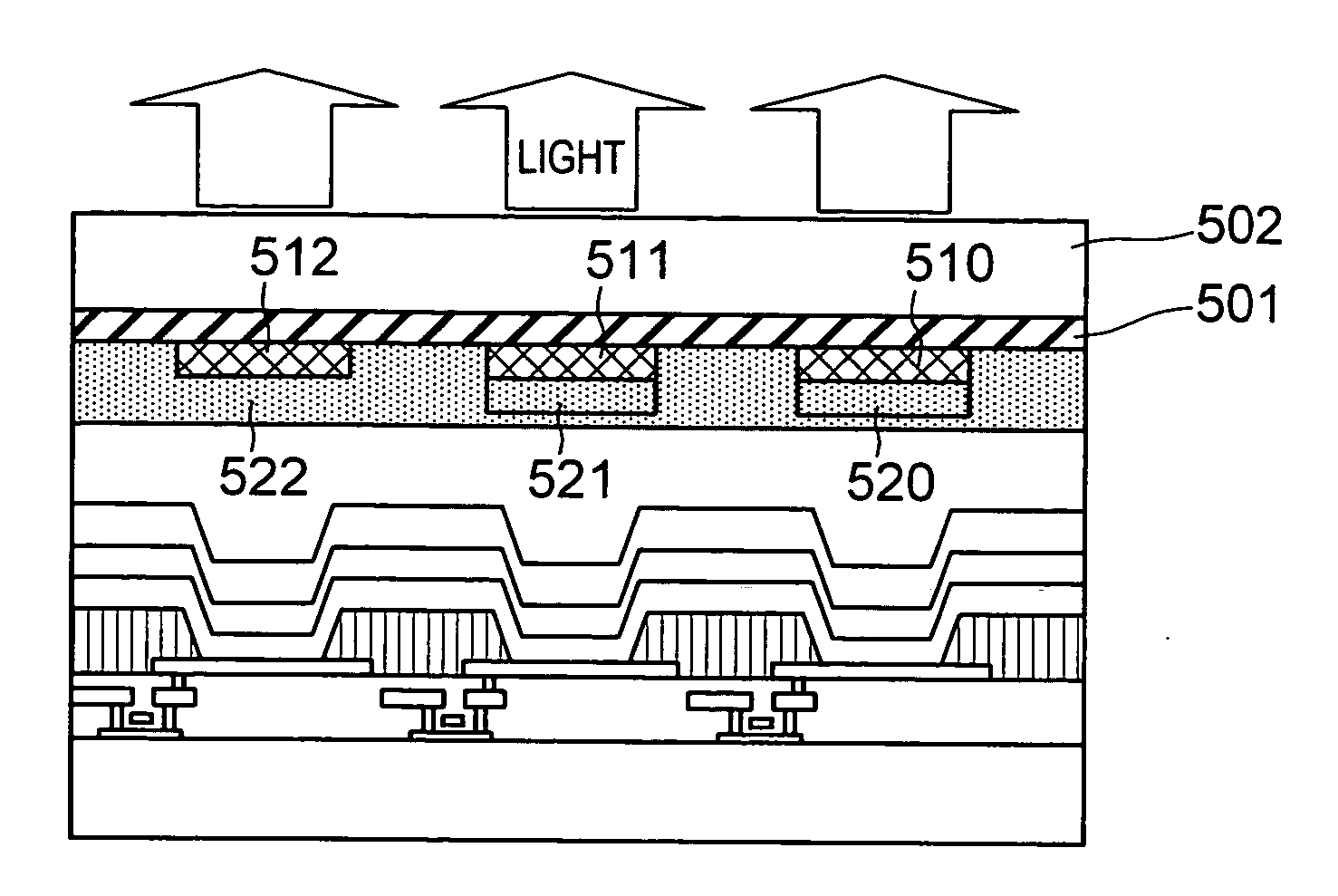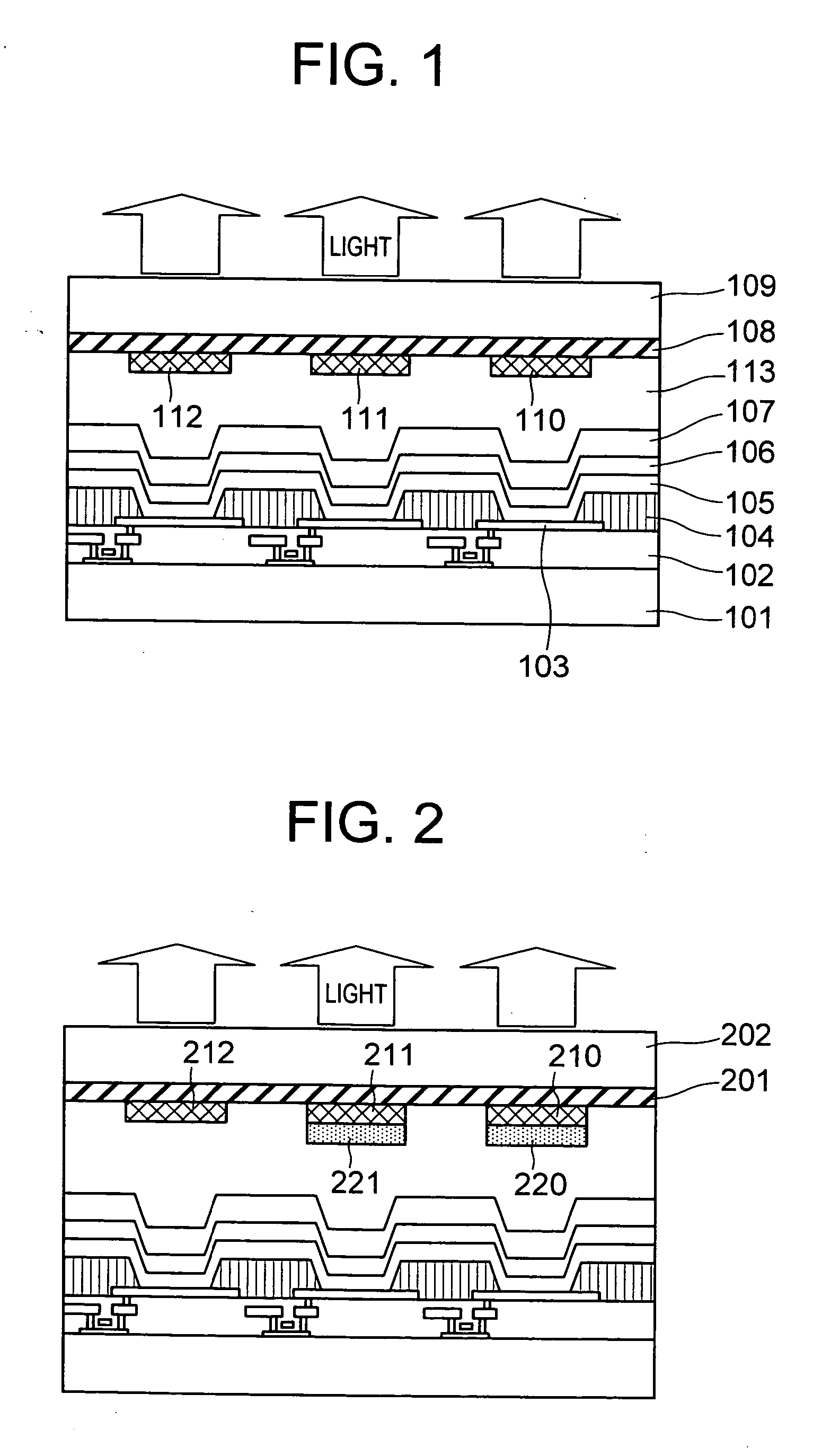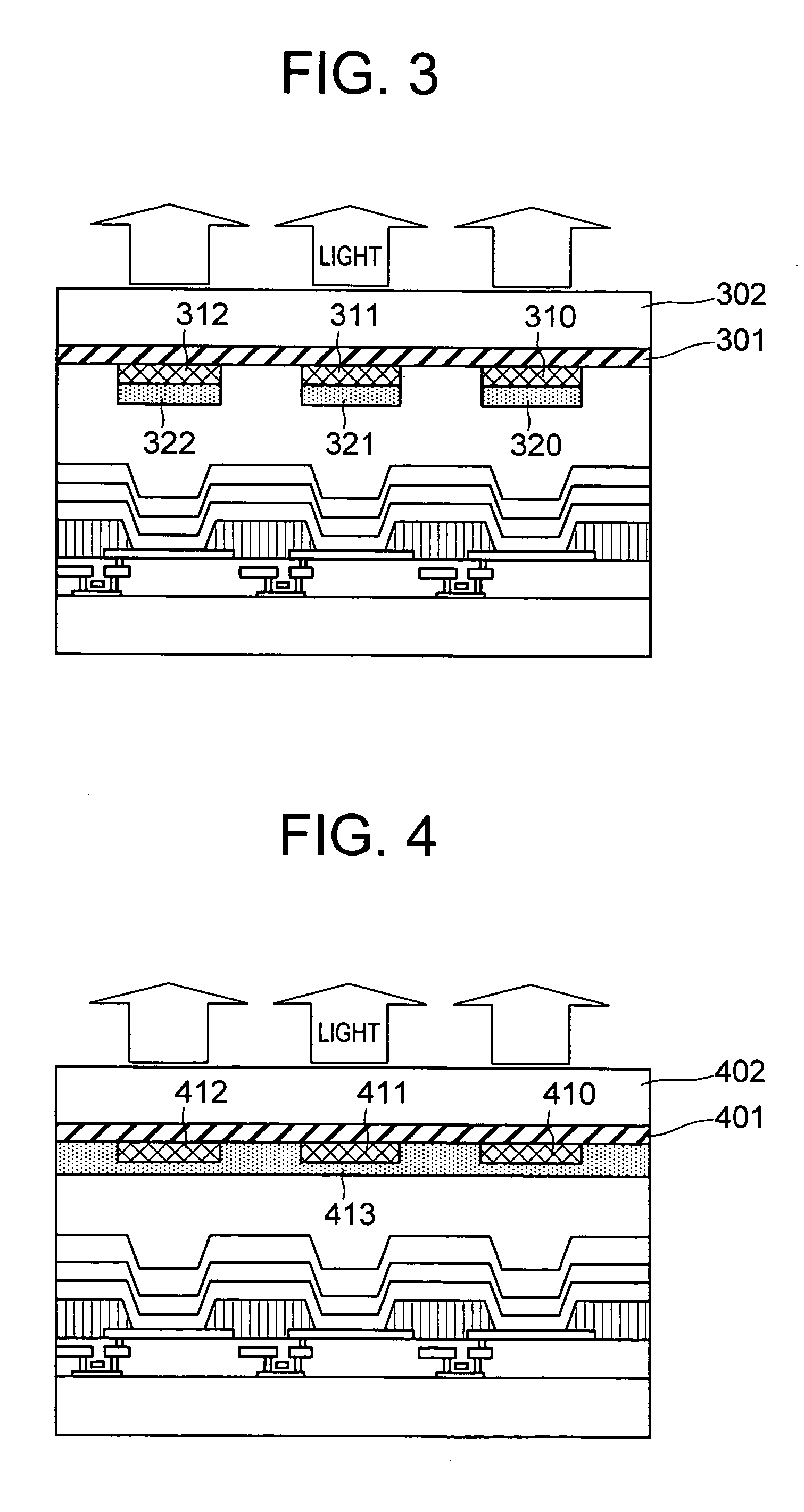Organic electroluminescence display apparatus
- Summary
- Abstract
- Description
- Claims
- Application Information
AI Technical Summary
Benefits of technology
Problems solved by technology
Method used
Image
Examples
example 1
[0080] As one example of the organic EL display apparatus according to the present invention, an active-matrix organic EL display apparatus will be explained using the cross-sectional view illustrated in FIG. 1.
[0081] A thin-film transistor (TFT) element circuit layer 102 formed with a thin-film transistor and electrode wiring was formed on a non-alkali glass substrate 101. Electrodes 103 sandwiching an organic EL layer 105 were separated by pixel units of an active-matrix organic EL display apparatus by a separating insulation film 104. The white color organic EL layer 105 was formed over the entire surface of the electrodes 103 and the separating insulation film 104, and a transparent electrode 106 was formed over that entire surface. Above this, an inorganic insulation film 107 was coated having gas barrier properties so that moisture or oxygen was not transmitted therethrough.
[0082] The TFT element circuit layer 102 was formed from a TFT employing amorphous silicon or low-temp...
example 2
[0114] Next, as one example of the organic EL display apparatus according to the present invention, an organic EL display apparatus provided with a color conversion filter will be explained using the substrate cross-sectional view illustrated in FIG. 2.
[0115] Since the difference between FIG. 2 and Example 1 as illustrated in FIG. 1 lies in the structure of the opposing transparent substrate 202, this point will now be explained.
[0116] To achieve full color display by splitting the emissions from the white color organic EL layer, an opposing transparent substrate 202 was formed with red, green and blue filter patterns (210, 211, 212), and red and green conversion filter patterns (220, 221). Between these filter patterns and the opposing transparent substrate 202 was formed a porous insulation film 201.
[0117] In this case the porous insulation film 201 was an insulation film which contained SiO and possessed the above-described characteristics (1) through (6). An insulation film w...
example 3
[0126] Next, as one example of the organic EL display apparatus according to the present invention, an organic EL display apparatus provided with a color conversion filter will be explained using the substrate cross-sectional view illustrated in FIG. 3.
[0127] Since the difference between FIG. 3 and Example 1 as illustrated in FIG. 1 lies in the structure of the opposing transparent substrate 302, this point will now be explained.
[0128] To achieve full color display by splitting the emissions from a white color organic EL layer, an opposing transparent substrate 302 was formed with red, green and blue pigment dispersion color filter patterns (310, 311, 312), and red, green and blue conversion filter patterns (320, 321, 322). Between these filter patterns and the opposing transparent substrate 302 was formed a porous insulation film 301.
[0129] In this case, the porous insulation film 301 was an insulation film which contained SiO and possessed the above-described characteristics (1...
PUM
 Login to View More
Login to View More Abstract
Description
Claims
Application Information
 Login to View More
Login to View More - R&D
- Intellectual Property
- Life Sciences
- Materials
- Tech Scout
- Unparalleled Data Quality
- Higher Quality Content
- 60% Fewer Hallucinations
Browse by: Latest US Patents, China's latest patents, Technical Efficacy Thesaurus, Application Domain, Technology Topic, Popular Technical Reports.
© 2025 PatSnap. All rights reserved.Legal|Privacy policy|Modern Slavery Act Transparency Statement|Sitemap|About US| Contact US: help@patsnap.com



